Limestone Crushing Plant Blueprint: Design a Profitable Line
3410Design a cost-effective limestone crushing plant. Our guide focuses on optimizing equipment configuration and flowcharts to boost yield and lower costs.
View detailsSearch the whole station Crushing Equipment
Choosing the wrong crusher costs money in repairs and downtime. It can ruin product quality, halt production, and ultimately hurt your bottom line. Understanding the core differences is key.
A Jaw Crusher is a primary crusher used for coarse reduction of large, run-of-mine rock. A Cone Crusher is a secondary or tertiary crusher that refines pre-crushed material to produce a finer, more cubical final product. They are not interchangeable.
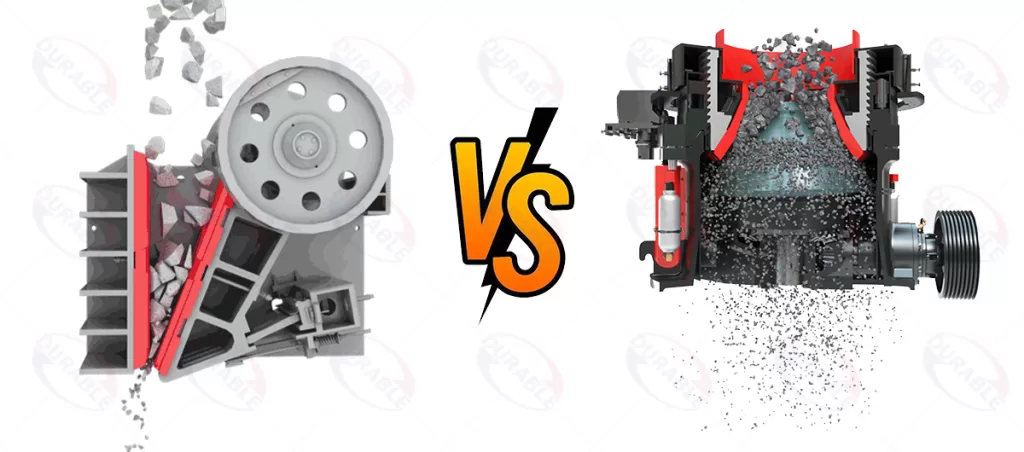
As a manufacturer with decades of experience designing crushing circuits, we at ZONEDING have seen firsthand how this choice impacts an entire operation. Newcomers often think it’s a simple “big rock vs. small rock” comparison. In reality, they are fundamentally different machines with different breaking principles. Let’s explore why this distinction is so critical for any crusher selection process.
You have huge, blasted rock from the quarry face. You need to break it down into something manageable for the rest of the plant. What makes the jaw crusher the go-to machine?
Yes, the jaw crusher is the premier machine for primary, coarse crushing. Its simple, robust design and wide feed opening are specifically engineered to handle large, unpredictable run-of-mine material with high reliability.
The jaw crusher’s role is defined by brute force and reliability. It is the gatekeeper of the entire aggregate production line.
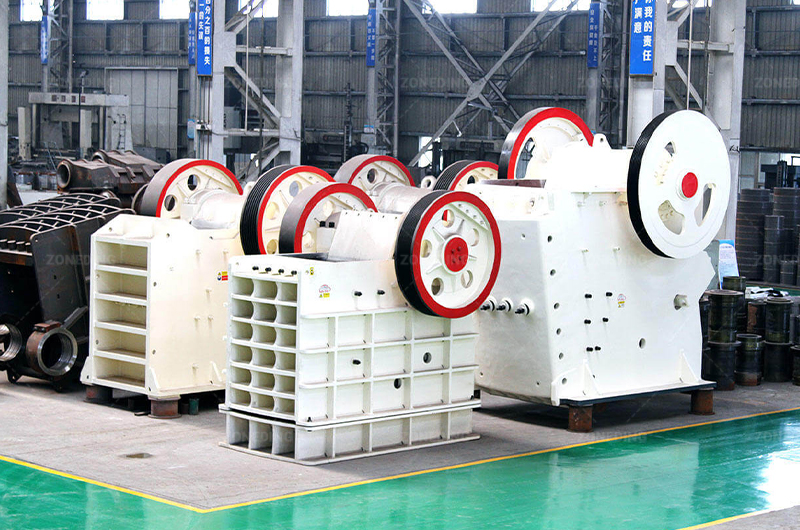
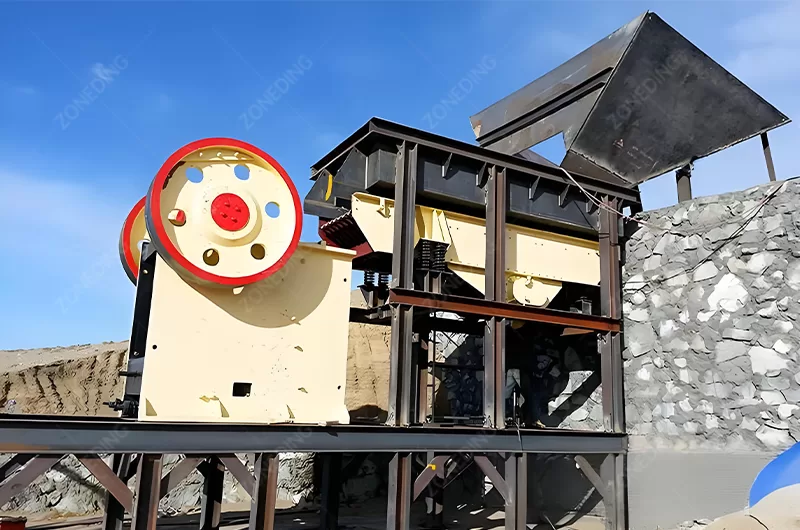
Its only job is to perform primary crushing. It takes the largest rocks from the mine or quarry (run-of-mine or ROM feed) and reduces them to a size that can be transported by conveyor and fed into the next crushing stage. It is not designed for precision, but for power.
It uses a simple compressive action. A moving swing jaw presses rock against a fixed jaw. The rock is squeezed until it breaks along its natural lines of weakness. This straightforward mechanism makes it mechanically simple and durable, capable of withstanding the immense shock loads associated with breaking oversized boulders. Its large feed opening size is its most critical feature, allowing it to accept material that no other crusher type can handle.
Your primary crusher has done its job. Now, you need to turn that coarse rock into a valuable, specified final product. How do you achieve the necessary size and shape?
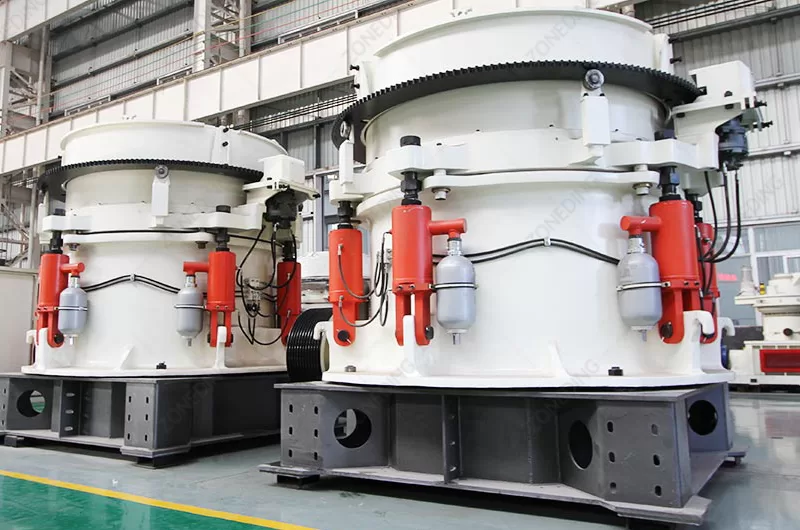
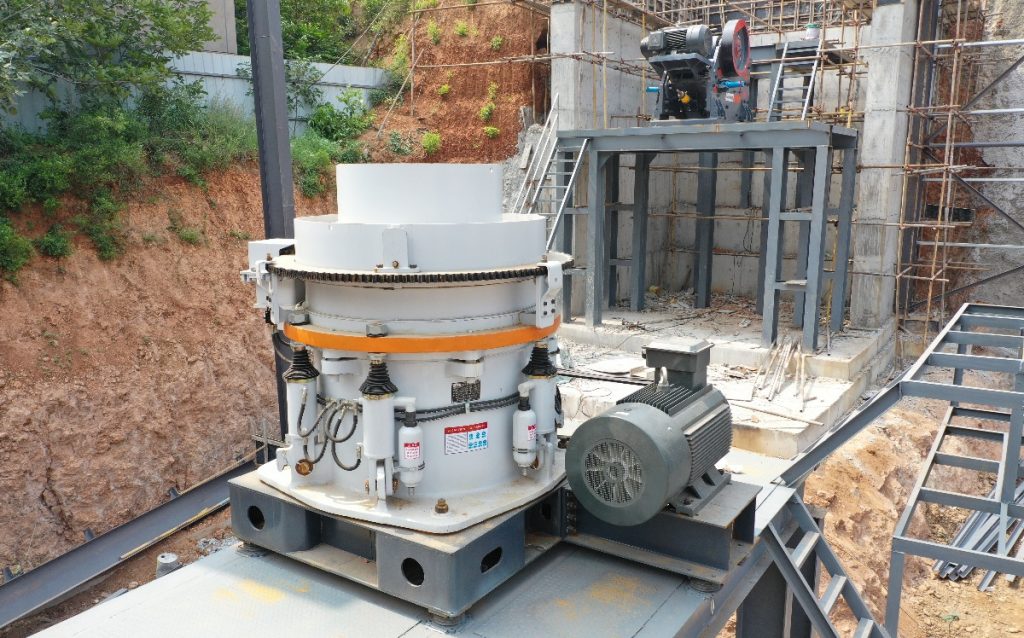
Absolutely. The cone crusher is the ideal machine for secondary and tertiary crushing stages. Its unique crushing action is specifically designed to produce a superior, more cubical final product that meets strict specifications.
If the jaw crusher is about brute force, the cone crusher is about finesse. Its purpose is to take pre-crushed material and refine it into high-quality construction aggregate.
The cone crusher‘s primary advantage is its ability to produce a cubical, or equidimensional, final product shape. This is achieved through a more complex crushing motion. An eccentrically rotating mantle moves within a fixed bowl liner. This creates a combination of compression and attrition (particle-on-particle grinding). As material flows down the chamber, it is repeatedly squeezed and ground, which breaks off elongated edges and produces the desired cubical shape.
For optimal performance, a cone crusher must be “choke fed,” meaning the crushing chamber should be kept full. This forces the rocks to grind against each other, dramatically improving cubicity and distributing wear evenly on the liners. This is a critical operational difference from a jaw crusher.
They both break rocks, but their applications and principles are fundamentally different. Understanding these distinctions is crucial for designing an efficient and profitable crushing circuit.
The key differences are in their stage of application, crushing action, product shape, feed requirements, handling of tramp iron, reduction ratio, adjustment method, cost, and primary application.
Based on our experience designing and equipping plants worldwide, here is a direct comparison of the nine most important factors in the jaw crusher vs cone crusher debate.
| Feature | Jaw Crusher | Cone Crusher |
|---|---|---|
| 1. Crushing Stage | Primary crushing only. Accepts large, run-of-mine feed. | Secondary, Tertiary, Quaternary. Requires pre-crushed, controlled feed. |
| 2. Crushing Action | Pure compression (squeezing). | Compression and attrition (grinding). |
| 3. Product Shape | More elongated and flaky (lower cubicity). | Highly cubical (equidimensional). |
| 4. Feeding Method | Can operate with intermittent feed. | Must be choke-fed (kept full) for best results. |
| 5. Tramp Iron | Vulnerable. Uncrushable material can break the toggle plate, causing hours of downtime. | Resilient. Modern cones have hydraulic tramp release systems that allow uncrushables to pass. |
| 6. Reduction Ratio | High (6:1 to 8:1). Makes big rocks significantly smaller. | Lower (3:1 to 5:1). Focused on gradual refinement. |
| 7. Setting Adjustment | Slow and manual (shims or hydraulic wedges). Done during shutdowns. | Fast and automated. Can be adjusted remotely from the control room during operation. |
| 8. Cost Profile | Lower initial crusher price (CAPEX). Mechanically simpler. | Higher CAPEX due to complex hydraulics and drive systems. |
| 9. Maintenance | Simpler wear parts (jaw plates). Higher risk of major stoppage from tramp iron. | Lower operating cost per ton of spec product. More complex lubrication and hydraulic systems. |
You see it in every plant diagram and every quarry layout. The flow always starts with a jaw crusher. This is not by chance; it is a fundamental principle of circuit design.
The jaw crusher is always placed first because it is the only crusher type robust enough and with a large enough feed opening to handle the massive, inconsistent, as-blasted rock from the quarry face.
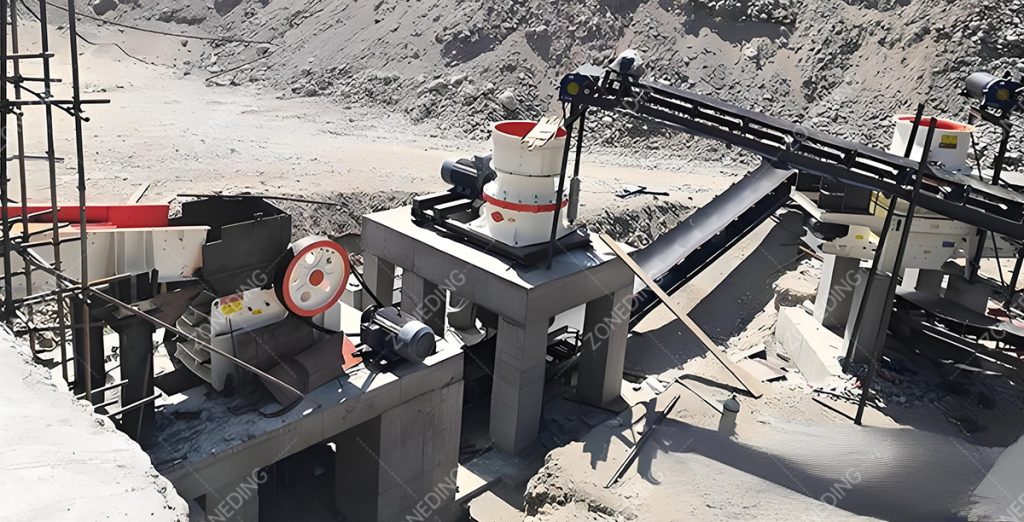
The entire aggregate production line depends on the jaw crusher’s ability to perform its specific role. It acts as the gatekeeper, performing the essential first stage of size reduction. Feeding large, oversized, or slabby run-of-mine material directly to a cone crusher would be catastrophic. The cone crusher is not designed for such impacts. Doing so would cause stalling, blockages, and severe damage to its core components, leading to extensive and expensive downtime. The jaw crusher protects the rest of the plant by taming the raw feed and creating a consistent, manageable material size that the secondary cone crusher can efficiently process. They are designed as a system, with the jaw crusher doing the heavy, dirty work upfront.
The initial price on the invoice is only the beginning of the story. The true crushing cost is a combination of the initial investment and the long-term expenses of operation and maintenance.
The jaw crusher has a lower initial purchase price. However, the cone crusher often provides a lower total operating cost per ton of finished product due to its higher efficiency and ability to create a more valuable product.
Thinking about cost requires looking at both capital and operational expenditures.
For a given tonnage capacity, the jaw crusher is mechanically simpler and therefore has a lower upfront purchase price. The cone crusher, with its complex eccentric drive, lubrication system, and hydraulic controls, is a significantly more expensive machine.
This is where the calculation gets more complex. While a cone crusher’s wear parts (mantle and bowl liner) can be more expensive than jaw plates, its overall efficiency often leads to lower costs over time. It consumes energy more effectively to produce a finished product and creates a premium, cubical aggregate that commands a higher price. In many operations, the jaw crusher is seen as a necessary “cost center,” while the cone crusher is the “profit center” that generates high-value materials.
When planning your plant, a key question is whether you can simplify the circuit to save on capital. Can one machine do the job, or are both essential?
For any operation producing a range of graded, high-quality aggregates for concrete or asphalt, you will almost always need both a jaw crusher and at least one cone crusher.
They are not competitors; they are partners in a system. The jaw crusher performs the primary crushing that the cone cannot. The cone crusher performs the secondary crushing and shaping that the jaw cannot.
For most commercial quarries aiming for profitability, the combination is the standard for a reason: it’s the most effective way to produce a full range of saleable products from raw rock.
Your capital budget is extremely limited, and a full two-stage crushing plant seems out of reach. Is there a “jack-of-all-trades” machine that can bridge the gap?
For softer, less abrasive rock like limestone, an impact crusher can sometimes be used as an all-in-one crushing solution. However, for hard, abrasive rock like granite, it is not a suitable substitute for a jaw and cone circuit.
The Impact Crusher is a viable alternative in specific situations. Instead of compression, it uses high-speed rotating hammers (blow bars) to shatter the rock against impact plates. This action produces an excellent cubical product and can achieve a high reduction ratio in a single machine. However, this high-impact process leads to very high wear rates when processing hard or abrasive materials like granite or high-silica river rock. In those applications, the cost of constantly replacing blow bars makes it economically unfeasible. For the right material, it’s a great option. For hard rock, the jaw/cone combination remains superior.
The world of crushing technology is diverse. While the jaw and cone are the mainstays for hard rock, other machines serve critical roles in specific applications.
Yes. Beyond impact crushers, you should also consider Vertical Shaft Impactors (VSI) for final product shaping and sand manufacturing, and hammer crushers for specific high-reduction applications.

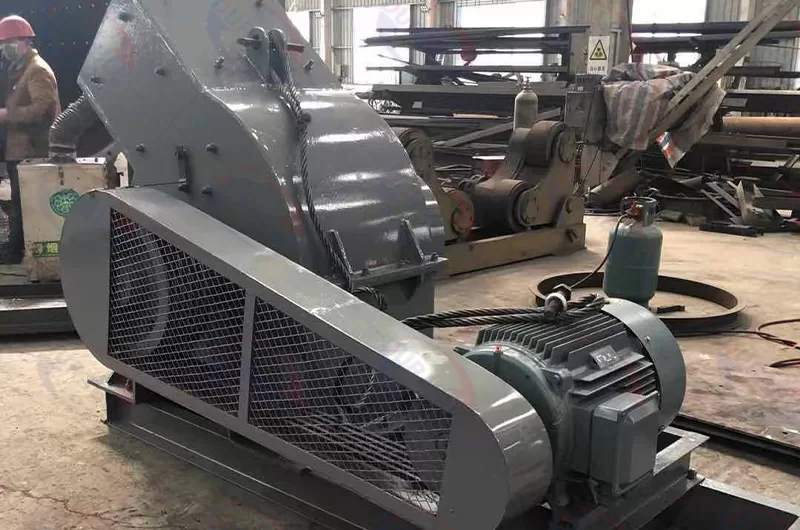
A complete crusher selection should consider the full range of available tools.
Ultimately, building the most profitable plant means choosing the right tool for each specific job in the crushing process.
Design a cost-effective limestone crushing plant. Our guide focuses on optimizing equipment configuration and flowcharts to boost yield and lower costs.
View detailsDiscover the 7 crucial aspects of mobile crushing technology, from its benefits and applications to key operational considerations for peak efficiency.
View detailsMaximize your gold recovery from ore. This technical guide explores how ball mills and wet pan mills work and which is best for efficient gold liberation.
View detailsA detailed explanation of a lead-zinc ore processing line. Understand the science of preferential flotation to separate lead (galena) and zinc concentrates.
View detailsWe use cookies to ensure that we give you the best experience on our website. If you continue to use this site we will assume that you are happy with it.
Privacy Policy